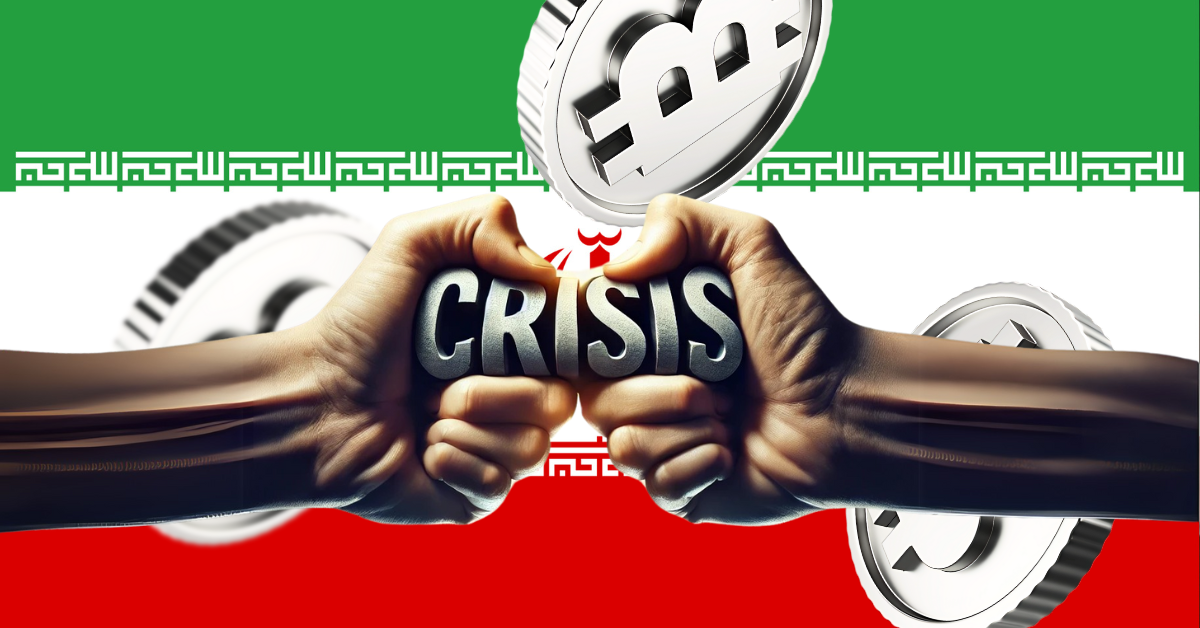Navigating Geopolitical Storms: Crypto’s Response to Conflict
The cryptocurrency market, a realm already grappling with regulatory ambiguities and macroeconomic headwinds, now faces a formidable new challenge: escalating geopolitical tensions. The simmering conflict between Israel and Iran, with the looming possibility of direct U.S. involvement, has introduced a volatile element, demanding a strategic assessment of its potential ramifications. Initial market tremors have been felt, but a comprehensive understanding of the interplay between these events and the crypto ecosystem’s inherent traits is paramount to predicting the full impact.
The Initial Jolt: Market Volatility Erupts
The burgeoning hostilities between Israel and Iran acted as an immediate catalyst for a market downturn. A snapshot from June 18th reveals a 1.30% dip in total market capitalization, settling at $3.25 trillion, a direct consequence of the escalating tensions. Bitcoin, the bellwether cryptocurrency, experienced a 0.87% decline within a single day, signaling a market-wide unease. The hardest hit were the altcoins, experiencing a more pronounced correction, with some plummeting by over 10%, acting as a stark reminder of the market’s susceptibility to geopolitical instability, and its ripple effects on alternative digital assets.
Following reports of Israeli airstrikes in Iran, a wave of selling ensued, pushing Bitcoin below the $104,000 threshold. This volatility triggered massive liquidations in the derivatives market, exceeding $1.2 billion, indicating a widespread investor panic and a scramble to mitigate risk. The cumulative effect resulted in a staggering $500 billion evaporation of the crypto market’s combined value, underscoring the sector’s vulnerability to geopolitical shocks.
U.S. Involvement: A Cascade of Consequences
Direct U.S. involvement in the Israel-Iran conflict would likely unleash even more severe consequences on the crypto market. Market analysts foresee a potential 10-20% drop in Bitcoin’s value as investors navigate a “risk-off” strategy, signaling a shift to safer assets.
This anticipated decline stems from interconnected factors. Firstly, U.S. involvement would likely intensify existing inflationary pressures. A common consequence of Middle Eastern conflicts is rising oil prices, which would exacerbate broader inflation concerns. These inflationary pressures could then prompt the Federal Reserve to delay anticipated interest rate cuts. This delay would push up Treasury yields, making riskier assets like crypto less appealing compared to government bonds.
Furthermore, heightened geopolitical turmoil would dampen overall risk appetite. During times of war, investors tend to prioritize capital preservation over speculative investments, regardless of their potential for high rewards. Cryptocurrency, despite its increasing acceptance, remains largely categorized as a risk asset.
Bitcoin’s Tightrope Walk: Inflation vs. Instability
Bitcoin’s performance amidst the escalating conflict has been somewhat robust, maintaining a price above $100,000 despite the surrounding chaos. However, this resilience is fragile, as Bitcoin navigates the opposing forces of inflation and geopolitical unrest.
While some advocate for Bitcoin as an inflation hedge, particularly amidst escalating geopolitical risk, this assertion lacks conclusive evidence. The historical correlation between Bitcoin and traditional risk assets suggests it often mirrors the behavior of stocks and other volatile investments during market stress.
The long-term recovery of Bitcoin, and the broader crypto market, hinges on the conflict’s duration and intensity. A protracted and widespread war could lead to a sustained downturn, while a swift resolution may facilitate a quicker rebound. Bitcoin’s ability to maintain support above $100,000 will be essential, with failure at this level potentially triggering a cascade of selling.
Altcoins in the Crosshairs: Amplified Vulnerability
Altcoins are poised to be exceptionally vulnerable if the U.S. were to become more involved in the conflict. Their inherent volatility and lower market capitalization render them susceptible to pronounced price swings during uncertain times. The recent 10% correction experienced by altcoins underscores their fragility amidst conflict.
Should Bitcoin’s price falter, altcoins could experience even more significant crashes. Investors are likely to prioritize the relative safety of Bitcoin over the higher-risk altcoin market, redirecting capital away from altcoins. This dynamic could trigger a significant outflow of capital from altcoins, exacerbating their downward trajectory in an environment of geopolitical instability.
The Contrarian View: Resilience Amidst Turmoil
It is important to note that not every market strategist anticipates a major downturn. Some analysts have observed that global equity markets have risen despite the escalating conflict, conveying a degree of resilience. This countertrend may be attributed to containment or assumptions of limited economic repercussion.
However, this resilience should not be misconstrued as if the crypto market is immune to geopolitical risk, seeing it is often more susceptible to global events compared to traditional markets, reacting swiftly due to its 24/7 operations and sensitivity to investor sentiment. Thus, the potential for sudden price swings remains is a significant factor.
A Call to Vigilance: Navigating Uncertainties
The Israel-Iran conflict, with the potential for U.S. involvement, introduces a complex challenge for the cryptocurrency market, and heightened risk. A U.S. entry into the conflict would likely trigger a further sell-off, potentially leading to a notable decline in the wider market capitalization.
The conflict’s duration and intensity, alongside macroeconomic elements like inflation and interest rates, will significantly influence market performance. Investors should proceed with caution, preparing for heightened risk and volatility. The current scenario underscores the critical need to understand the interplay between geopolitical events and cryptocurrency dynamics. Navigating this complex territory necessitates proactive risk management and a keen awareness of potential disruptions.

